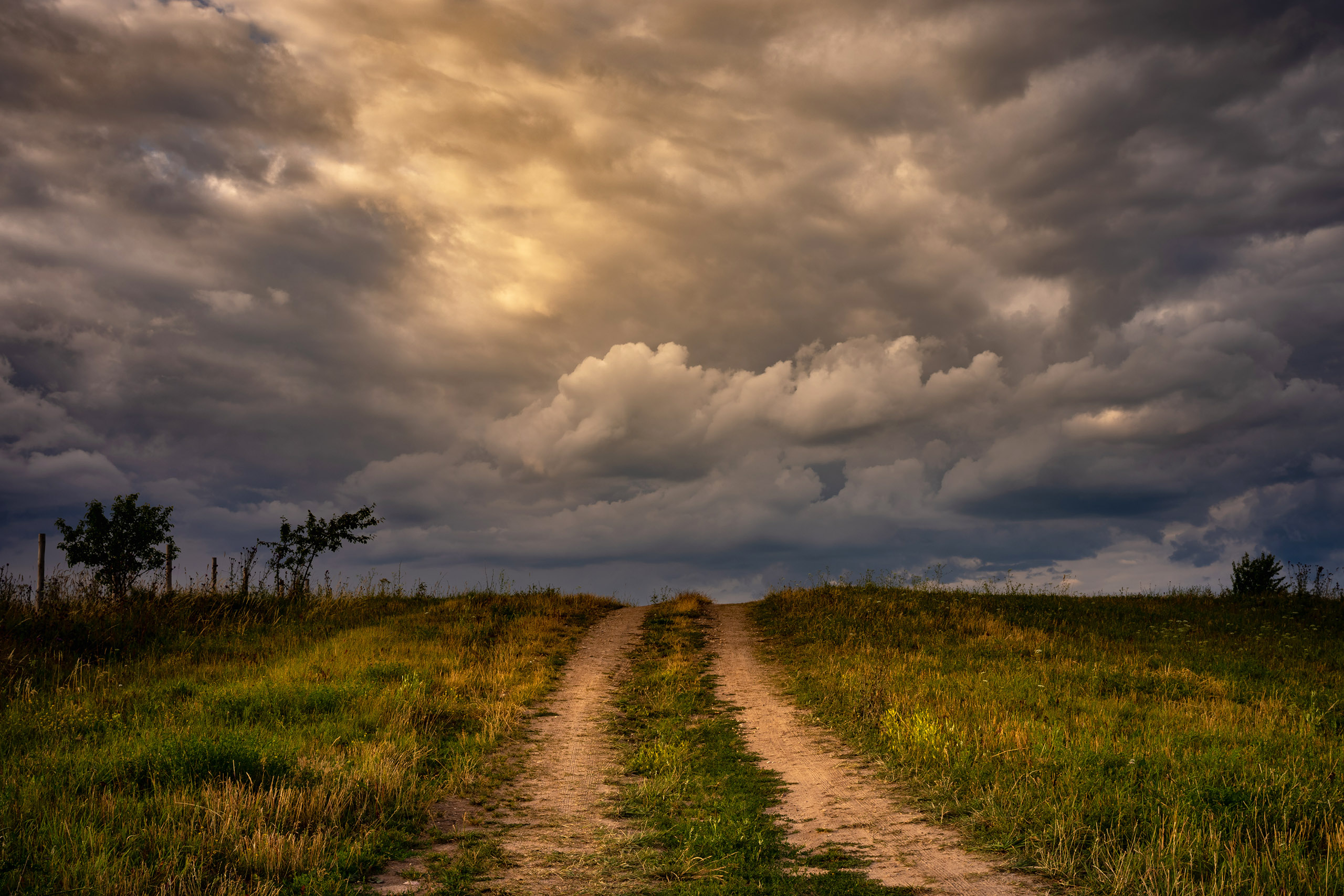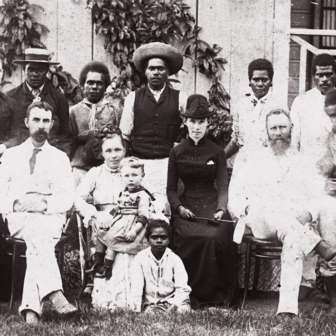Gail Jones’s eleventh novel, The Name of the Sister, opens with a freelance journalist, Angie, watching a catalogue of miseries on the evening news. Her attention is caught by two successive items that stay with her through the novel.
In the first, an unnamed man in an unidentified but snowy place is unwillingly caught in a state of utter desolation at the sudden death of his family. The second shows a woman found on Wilyakali country, just outside Broken Hill, deeply traumatised, without voice and seemingly without self-knowledge or history. Her life, Jones writes, “was a puzzle waiting to be solved.”
Social media weighs in, speculating on the woman’s identity, and Angie’s childhood friend, Bev Calder, a policewoman, is put in charge of the investigation. Angie is not immune to the puzzle. Although she is suspicious of the true crime genre, with its “wannabe solvers of dodgy whodunnits” — the kind of thing her schoolteacher husband Sam watches on television and reads at night — she quickly resolves to write a story about “Jane,” as the unknown woman comes to be known.
Despite Bev’s somewhat underhanded help, the story never gets published. Instead, Angie, and the novel, are redirected to the projections and hopes of people who share with her the stories of their own female relatives who have never been found.
The Name of the Sister creates and occupies the state of suspension in which these relatives live: the space between loss and discovery that its opening scene establishes. Not a lot happens for much of the novel, at least in terms of plot-driven action. Instead, Angie is given to reflecting movingly on her sometimes distressing past and her love of Egyptian mythology while she faces a disintegrating marriage in the present.
These are not the kinds of emotional ebbs and flows associated with thrillers, the genre some readers would have been expecting — helped along by the book’s blurb: “This is how the story of the Unknown Woman begins. Angie, a freelance journalist, joins her childhood friend Bev, the police officer in charge of the case, try to solve the mystery.”
Bev works towards what she calls “good results.” She also carries the promise of the book-as-thriller, with the narrative focus shifting from uncovering an identity — shown to be far from straightforward — to her work as a criminal investigator, which unexpectedly pulls in her friend.
For the most part, the novel gets no closer to solving the woman’s mystery, largely because it shares the lessons of Angie’s initial induction into the unknowability of others, which the snow man represents. And Angie’s acknowledgement that “The story had fizzled” is not so much a lamentation as an invitation to attend to how the puzzle of the woman is nested among other questions, contemplations and ways of knowing.
This call is suggested by the epigraph to The Name of the Sister. Three lines from Louise Glück’s lyric poem, “October” (2004) are offered as the book’s frame of reference: “you are not alone, / the poem said, / in the dark tunnel.” Glück’s poem turns on an unnameable catastrophe, “an allegory of waste,” and wonders at its own capacity to realise the promise of connection it makes “as though it were the artist’s duty to create / hope, but out of what? what?”
Towards its conclusion, The Name of the Sister makes material Glück’s dark tunnel and confirms female companionship and solidarity in the face of gendered violence. And throughout its pages, it shares Glück’s creative questioning.
Jones gives this querying role to her novel’s protagonist, who in welcoming stories from the loved ones of the disappeared finds herself repeatedly telling them, “I am only a journalist, I cannot help you.” Yet she also intuits the world as would a poet. “She saw the rhymes and connections between unlike things,” much as the novel itself does.
References to music and poetry pattern the narrative, as do avian images. The ibis is rescued from its derogatory status as a “bin chicken” and brought into proximity with Thoth, the Egyptian god of wisdom and writing, and the bronze-wing creator pigeon, Marnpi, of Wilyakali lore. Bev draws clear lines: “Crime isn’t like literature,” she tells Angie. At one point Angie agrees, admitting that “For all the deadly fun of plotted drama, this was not her genre.” While by no means dismissive of either character, many knowledges meet in this novel.
In this way, The Name of the Sister reflects the preoccupations that travel across Jones’s writing. Some reviewers have cast the novel as a departure, with its foray into the thriller genre, and yet her earlier works anticipate some of its preoccupations.
It is not too much of a stretch to say that many of Jones’s novels have taken more than a passing interest in the thriller. The Death of Noah Glass (2018) begins as what that novel’s title seems to promise — but deliberately doesn’t deliver — a murderous art heist plot. In Five Bells (2011) a young girl disappears. Sorry (2007) begins with the memory of man’s death and a young Indigenous woman falsely accused of murder, an injustice made apparent as the original scene is reshaped and brought into a traumatic focus through fragments and repetitions. (Sorry also features a character obsessed with Shakespeare; Sam, Angie’s husband, teaches Shakespeare passionately but unthinkingly.) A Guide to Berlin (2015) starts with a scene of proleptic mourning that the last part of the novel addresses when it purposefully shifts genres and moves towards the thriller.
The Name of the Sister is the least overtly experimental of these novels but, like them, it is interrogative of narrative form, rearranging and disrupting the reassuring predictability of genre and plot to allow for irresolution and unknowingness. It also shares with many of Jones’s other novels a female writer-protagonist who is somewhat self-contained and anachronistic. Angie sees herself as never really fitting in, much like Anna Griffin, the biographer in Black Mirror (2002), Alice Black in Dreams of Speaking (2006), who is working on a book on modernity, Cass Turner in A Guide to Berlin, who is meant to be writing a book but spends little time doing so, and Helen Ross in One Another (2024), who is researching a thesis on Joseph Conrad.
Jones’s latest novel also returns to a mining town, a site that makes an appearance in earlier novels. Our Shadow (2020) was interested in three generations living in Kalgoorlie. In Black Mirror, the personal histories of Anna Griffin and her biographical subject, Victoria Morell, are yoked to a mining town that is also the scene of Indigenous displacement and reclamation. In The Name of the Sister, Broken Hill is meaningfully overdetermined by horror cinema and its representations of “the Australian outback,” as the textual presence of the Mad Max 2 museum suggests.
Existent with these shared features, and going some way towards understanding Jones’s return to them, is a common querying that is possibly unresolvable. Grief is an abiding force within Jones’s writing, and her stories wonder at what might emerge from it.
In the near conclusion of The Name of the Sister hope is said to be lost. But the prospect of significance is also offered in the form of patterns and music, and can be read as a tentative, affirmative response to Glück’s probing question: “what?” As such, The Name of the Sister is Jones’s latest eloquent exploration, in its specificities as well as in conversation with her previous novels, of the role of art and the experience of loss. •
The Name of the Sister
By Gail Jones | Text | $34.99 | 208 pages




